The CPG Industry Wants to Streamline Your Home Deliveries
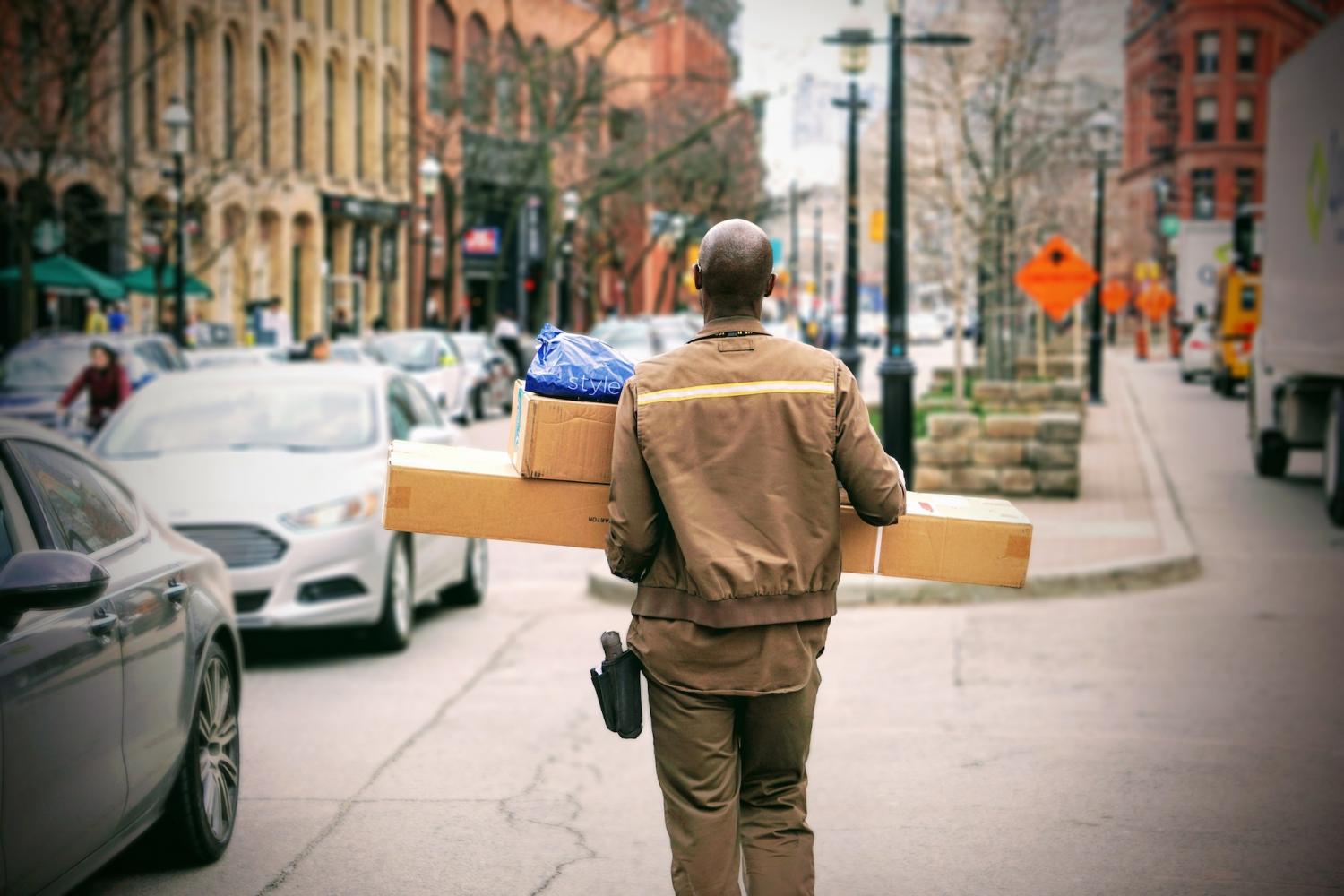
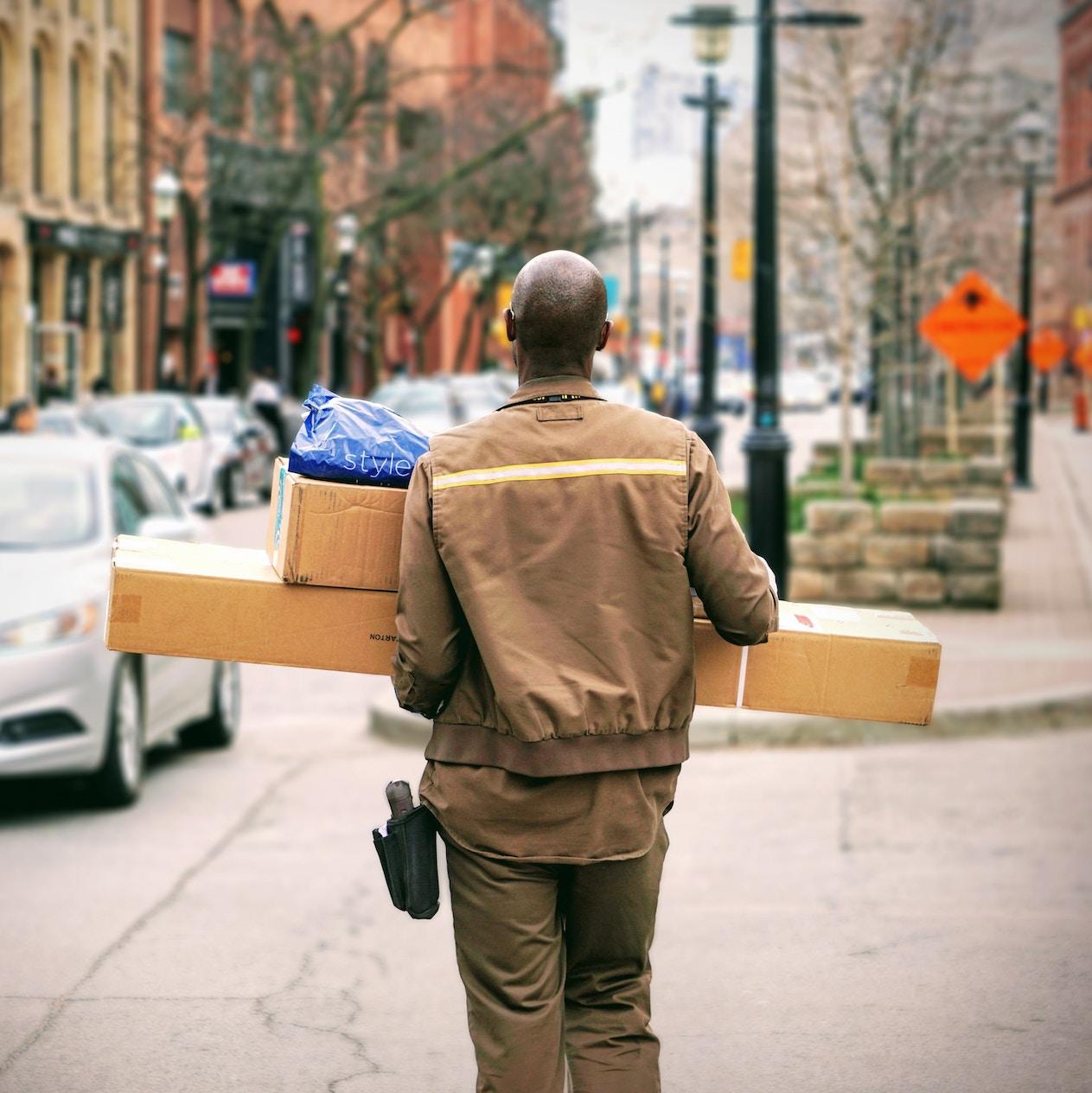
As consumer packaged goods (CPG) companies explore ways to engage more customers and increase revenue streams, a growing trend is finding better ways to deliver products. While many companies have started selling more sustainable products, so far only a few are offering innovative solutions for shipping and delivery.
As Heather Kauffman, cofounder and COO of sustainable home goods company Full Circle, said of shipping soaps and detergents, for example: “If you think about the carbon emissions required to ship bottles largely filled with water from the manufacturer to the retailer and then to the consumer’s home, it really adds up.”
In response to those heavy packages, wasteful carbon emissions and bursted bottles, some companies have begun reengineering products to take the water out. Instead of shipping plastic bottles full of blue liquid or foamy white sprays, manufacturers are optimistic that cleaning product tablets will take off. Tablets are easier to ship and reduce the harmful environmental impacts associated with packaging and transporting their liquid counterparts.
A few companies making waves with cleaning product tablets include Blueland, Dazz, Bottle Bright and Effervescent. Blueland recently caught a lot of attention because not only is the company committed to using nontoxic ingredients, but it has also done an excellent job of marketing how simple these tablets are to use, even if some consumers may be unfamiliar with them. In addition, every piece of packaging Blueland uses—from the Forever Bottles (which aren’t intended to be recycled) to the tablet pack wrapper to the shipping materials—is 100 percent recyclable.
These extra steps to change conventional packaging and shipping methods take what companies like Seventh Generation and other sustainability-focused CPG brands have been forwarding for decades to the next level. Another CPG innovator ready to challenge consumer standards is Loop, a zero-waste platform for consumer products set to launch this year. Loop’s mission to reduce single-use, disposable CPG packaging may also revolutionize how people get products—from cleaning supplies, laundry detergent, toothpaste, ice cream and more.
Loop is partnering with more than two dozen major household brands, including Tide, Crest, Dove, Gillette, Häagen-Dazs and more, to replace single-use packaging with reusable alternatives and make it as convenient as possible with home delivery and empties pick-up. Imagine no brick-and-mortar store checkouts for toothpaste and never having to double check to see if the local recycling program accepts #3 plastics. By making the reusable containers aesthetically appealing and convenient to ship off when done, Loop—along with its partners—is betting that consumers simply won’t want to return to old habits.
These innovative companies are transforming the CPG industry. By changing product design to make shipping more sustainable and creating new delivery options, these resourceful companies are working to change consumer habits—from highly unsustainable, single-use consumerism to healthier, more adept ways. By keeping people, planet and profit in sight, revolutionary product streams are being introduced to the market.
Image credit: Maarten van den Heuvel/Unsplash
Enlisting Cows in the Struggle to Reverse Climate Change
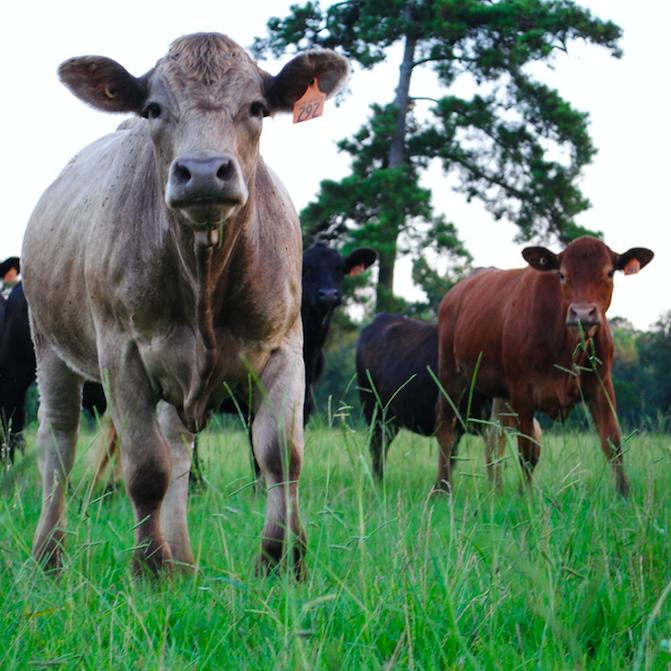
What if there were a better way to produce beef - one that actually reduces atmospheric carbon? This fourth-generation cattleman explains why he believes he has found an answer.
Beef has a bad name these days. The kind of beef, that is, that comes from cows, not the plant-based alternatives from Impossible Burger and Beyond Meat getting so much buzz lately.
A key reason for beef’s bad rap is its large carbon footprint: The Food and Agriculture Organization (FAO) estimates that livestock is responsible for at least 14.5 percent of greenhouse gases being released worldwide.
But what if there were a better way to produce beef—one that actually reduces atmospheric carbon? Fourth-generation Georgia cattleman Will Harris (pictured below), owner of White Oak Pastures, believes he has found the answer “by coming full cycle to the way my grandfather and great-grandfather farmed the land,” he told TriplePundit. “We call it radically traditional farming.”

In 1995, Harris transitioned his conventional farm operations to a grass-fed, pastured program. Now a recent Life Cycle Assessment (LCA) study by environmental research firm Quantis has found that White Oak Pastures is offsetting at least 100 percent of the farm's grass-fed beef carbon emissions and as much as 85 percent of the farm’s total carbon emissions. Instead of producing net emissions, Harris says his grass-fed cattle sequester more carbon than they produce.
Using both soil sampling and modeled data from 2017, the LCA analyzed the farm’s overall greenhouse gas footprint. The study included enteric emissions (belches and gas) from cattle, manure emissions, farm activities, slaughter and transport, and carbon sequestration through soil and plant matter.
The LCA was funded by General Mills, which is working with White Oak Pastures on regenerative agriculture practices. White Oak Pastures is a key supplier for Epic Provisions, General Mills’ U.S. meat-based snacks business.
Healing the land
“Going back to the older ways was about healing my land from years of centralized, commoditized, industrialized farming. It was about caring for my animals and helping my local rural community,” Harris said. “The carbon sequestration was a pleasant, unintended benefit.”
In the past 25 years, Harris has transitioned from 0.5 percent to 5 percent organic farming, he said, and his revenues have increased from $1 million to $20 million. And his operation has grown from three employees making minimum wage to 165 employees “making twice the county average in one of the most impoverished counties in Georgia,” he added.
Harris said his practices, like grazing small ruminants such as sheep together with cows, have helped keep his animals healthier. The soil has gone from 1 percent soil organic matter to 5 percent. Water retention in the soil is also better, he said. There’s greater biodiversity, he added, including the return of bald eagles.
The “save more than you spend” carbon model on Harris’ zero waste farm doesn’t have to be radical, he argues.
“But I only have 3,200 acres. We need a lot more farmers to do this. No one set out to ruin the land or harm the animals or impoverish our rural communities. But collectively we decided we wanted really cheap, really abundant food, and in the narrow efforts to make food cheap and abundant through centralization, commoditization and industrialization, we sacrificed the rural economy and the degradation of the land and the welfare of the animals.”
Harris believes that consumers will have to play the most important role in driving a transition in beef production that is less harmful to the climate. “I won’t be able to influence another farmer. I can show them what I do, but it’s consumers who have the influence,” he said.
Lower carbon footprint than plant-based alternatives
“The results from the White Oak Pastures’ LCA turns conventional wisdom about beef on its head,” Shauna Sadowski, senior sustainability manager for the natural and organic business unit at General Mills, told 3p.
“Not only is White Oak Pastures beef lower in carbon emissions than conventional beef, it also has a smaller carbon footprint than other non-beef protein sources, including Impossible Burger and Beyond Meat,” Sadowski said, citing the plant-based meat companies' own public LCAs. “Through this LCA on White Oak Pastures, we see the potential for what is possible through holistic land stewardship.”
The FAO’s Tackling Climate Change Through Livestock report shows that a 30 percent reduction in livestock GHG emissions are within reach—if “producers in a given system, region and climate adopted technologies and practices currently used by the 10 percent of producers with the lowest emissions intensity.”
Such practices, the FAO said, “are not widely used today.”
Image credit: White Oak Pastures
Lyft Fighting ADA Compliance in Court


A class action lawsuit against Lyft claims the ride-hailing company's actions toward people with disabilities are anything but compliant with the Americans with Disabilities Act (ADA).
Lyft has found meteoric success in part because the ride-hailing company has positioned itself as a more human and ethical alternative to Uber. The company also claims it has transport options that are accessible to people with disabilities—to that point, the company has a page of FAQs for drivers on how to assist people who use a wheelchair.
But according to Westchester County resident Harriet Lowell and the nonprofit Disabled on the Move, Inc. (WDOMI), Lyft’s actions are anything but compliant with the Americans with Disabilities Act. Now, Lowell and WDOMI are parties to a class-action lawsuit recently filed in New York.
According to the lawsuit, Lyft has regularly failed to provide equal access and service to people with disabilities in Westchester County, New York. Among the complaints are accusations that Lyft texted a disabled citizen to find alternative transport since none of its drivers was available; the company made it clear that few wheelchair-accessible cars were within its fleet of cars; and that those who need to be driven in such vehicles often have far longer wait times.
Such news is nothing new for Lyft. In a mandatory investors’ prospectus (Form S-1) filed with the U.S. Securities and Exchange Commission (SEC) earlier this year, the company acknowledged that it has been subjected to similar litigation—and would fight all such lawsuits tooth and nail:
“We are involved in a number of class actions alleging violations of consumer protection laws such as the TCPA as well as violations of other laws such as the Americans with Disabilities Act, or the ADA. We dispute any allegations of wrongdoing and intend to continue to defend ourselves vigorously in these matters.”
And in an emailed statement that sounds Orwellian, a Lyft spokesperson told Politico reporter Samantha Maldonado, “We think about accessibility broadly and know that many who were previously underserved by transit and taxis are now able to rely on Lyft for convenient and affordable rides.”
The New York Taxi and Limousine Commission, which has jurisdiction over companies like Uber and Lyft in the Big Apple, would disagree. Last year, in describing people with disabilities as the city’s “largest minority group,” the Commission claimed it is the largest paratransit operator in the U.S. with over 6 million trips for 150,000 eligible city residents annually. Furthermore, the commission provides those rides for a price of a subway fare ($2.75), across New York’s five boroughs and certain areas of adjoining Westchester and Nassau counties. The commission also employs a full-time coordinator who does everything from answering accessibility-related questions to setting up hearings. On the Left Coast, Los Angeles has long deployed a similar program.
So while NYC has a very visible advocate who strives to ensure the city’s disabled residents can get around, let’s show you the optics: Lyft comes across as dodging any responsibility as being an inclusive transportation provider, and doing so through legalese. According to Maldonado, Lyft’s legal team attempted to dismiss Lowell's lawsuit by saying that users of the app have agreed to solve any disputes in arbitration, thereby waiving their rights to launch class-action lawsuits due to the company’s terms and conditions of service—a motion that a federal judge dismissed. Lyft is also fighting the lawsuit on the grounds that it is a technology company, not a transportation company.
Since Lyft relies on freelancers—one of many facts about the company's business model that the aforementioned class-action lawsuit mentions in a laundry list that is hardly flattering—and, of course, retrofitting each and every car in its fleet isn’t possible. But Lyft would do itself, and many riders, a huge favor and burnish its brand reputation if it could find a solution somewhere in the middle.
In the meantime, Lyft’s mission statement, “Improve people's lives with the world's best transportation,” rings hallow. Drivers for both Lyft and Uber are expected to strike in advance of Uber's IPO this week, calling for higher wages. Even as Lyft and Uber prepare to go public, this class-action suit presents another example of why many ESG (environmental, social and governance)-oriented investors are avoiding ride-hailing companies for now.
Image credit: New York City Department of Transportation/Flickr
Could the Open-Source Model Help Us Develop Advanced Sustainable Materials?

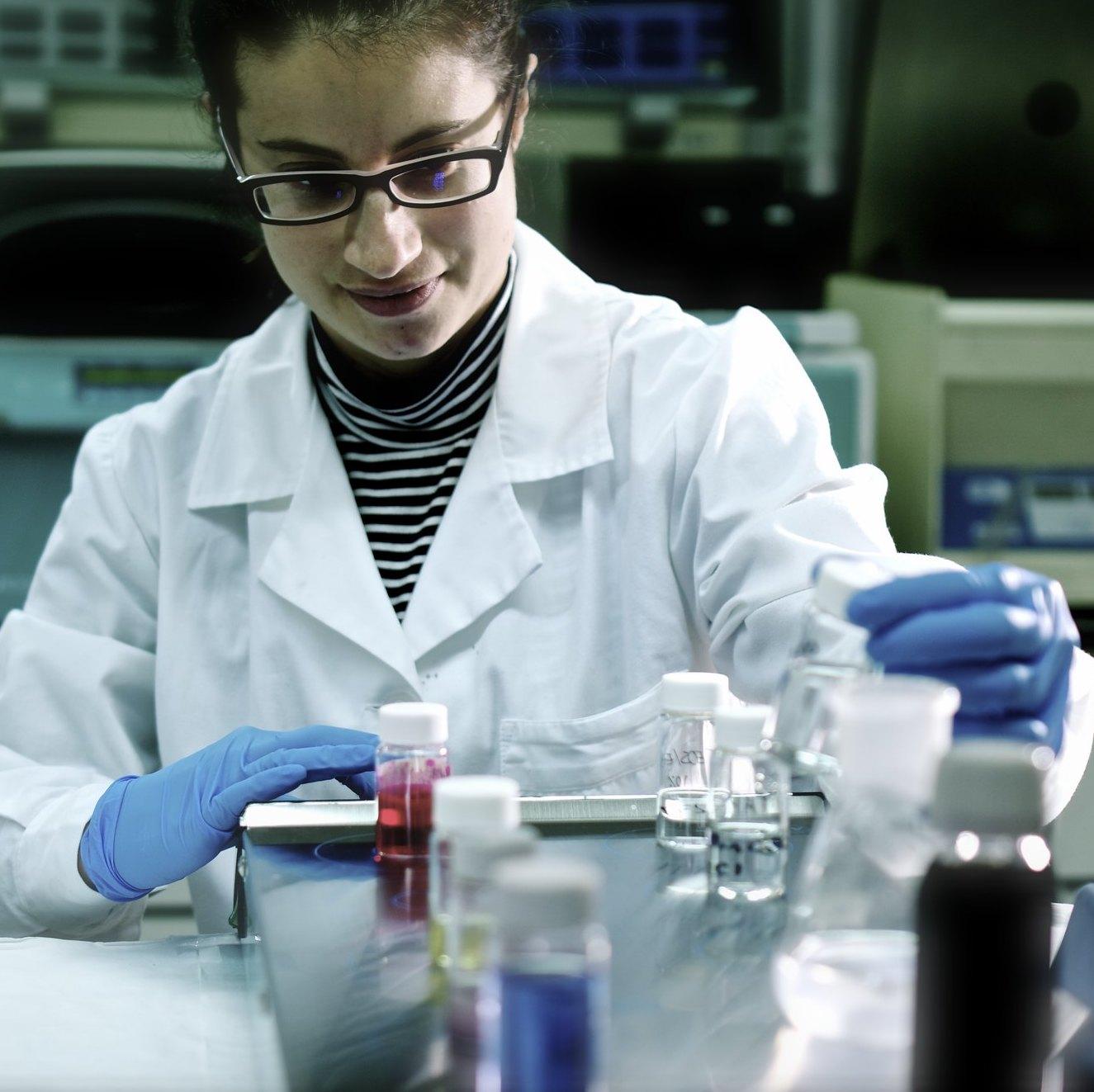
The open-source model paved the way for significant advancements in multiple sectors. Can it do the same for the development of cutting-edge sustainable materials?
Image: A researcher experiments with the advanced nanomaterial graphene.
The open-source model paved the way for significant advancements in the fields of software and programming, and has positively affected industries such as medicine, engineering and even fashion, among others. The success of open-source methods brings to light the potential for its implementation in other areas.
For instance, advanced raw materials under development—such as the 2-D wonder material graphene—could greatly benefit from the widespread experimentation of open-source use. In its current state, graphene is primarily researched by scientists in universities and labs, but by making graphene a material that is open to be improved upon by anyone, we might see the fulfillment of the potential that the nanomaterial has been hailed for since its discovery.
What is open-source?
Open-source is a model of development that focuses on decentralization and allows for open collaboration on projects. Typically, the open-source model is used for software development: A program’s source code can be made publicly available for modification, where individual users can make changes to the code and share it with others. The prevalence of software in our technological society makes open-sourcing highly conducive to progress.
The concept of open-source was conceived as the first computers were created in the 1950s and '60s. Computers were initially used by universities for academic and research purposes. As a result, the attitude around sharing source code was a natural reflection of the academic mentality: focused on openness, cooperation and sharing of knowledge.
Open-source sharing saw a decline in the 1970s and '80s, as technology companies instead opted to create proprietary software instead of open-sourcing. In 1989, programmer and activist Richard Stallman successfully implemented the GNU General Public License, the first “copyleft” license. This ensured that software source codes under the license would be made publically available, along with any subsequent iterations made by users.
This new framework paved the way for open-source methods to enter the mainstream: The open-source trend gained popularity during the dot-com boom of the late '90s and quickly took its place in our modern society. During this time, the term “open-source” was created. Used for software as early as Linux to as recent as Android, open-source softwares have defined our technology for the past 20 years.
The benefits of open-source and what it can do for materials like graphene
The collaborative nature of open-source coding has significantly boosted our software capabilities in a short span of time. Open-sourcing allows companies to avoid starting from scratch by using already existing softwares and modifying them for their own purposes. This saves time and resources and gives companies more room to experiment and accelerate their advancements. Open-source methods help achieve a broader scope of innovation, since the people researching and tinkering are not limited to the professionals in the lab, but can now include hobbyists or aspiring scientists looking to get more involved.
This level of experimentation could take emerging materials like graphene beyond their current limits. Graphene’s capabilities are staggering—it is essentially two-dimensional, flexible, 200 times stronger than steel, conducts heat 10 times better than copper, and conducts electricity 250 times better than silicon. Its abilities are far-reaching and extremely potent, making graphene applications nearly endless.
As it stands, graphene research is limited to a select few technology companies. Samsung, for instance, has the most graphene patents to date. Otherwise, most of graphene research is done in university labs. In the same way that open-sourcing has built up software and related technologies, open-sourcing could also viably allow a wider range of individuals and communities to help unlock graphene’s unrealized potential.
Limitations of open-source for materials
Materials like graphene are fundamentally different from software in that they are physical resources. Since graphene’s discovery, quantity has been a serious issue preventing the material from seeing widespread use. Natural reserves of graphene are few and far between, and while scientists have discovered ways to produce graphene, the methods have proved unscalable.
And how would the average user even experiment with such a material? For those who don’t have the same equipment researchers do, how can they go about tinkering with graphene? In order for raw materials like graphene to become open-source, a solution for these two problems must be found.
Mass production and 3-D printing: Solutions for open-source graphene
However, the solutions may be closer at hand than you might think. Recently, MIT researchers discovered a potentially scalable way to mass-produce graphene. They utilize an industrial manufacturing process known as a roll-to-roll method, combined with a chemical vapor deposition (a common way for researchers to create graphene). The researchers were able to produce a graphene foil at 5 centimeters per minute. After their machine had run for four hours, they had produced 10 meters of graphene.
If this process continues to prove viable, we may begin to see the mass production of graphene become a reality—which could pave the way for ultra-durable products that stay in use longer and produce less waste.
For issues of experimentation, 3-D printers are increasingly becoming capable of filling the role. The cost of 3-D printers have been steadily decreasing as they become more capable. And 3-D printing software is also beginning to see a shift toward open-source methods as opposed to the proprietary angle that dominated the early 3-D printing industry.
One of the most important aspects of 3-D printing is the material used to create objects. 3-D printers are capable of using a number of materials, including plastic polymers, metal and even wood. Recently, researchers at Virginia Tech University and the Lawrence Livermore National Laboratory (LLNL) have been experimenting with 3-D printing with graphene printing. They successfully created 3-D graphene aerogels and foams that can be shaped to suit various needs. Graphene is an essentially 2-D material, so the ability to craft it into a three-dimensional form opens up the current possibilities for the material, extending beyond the membrane technology upon which many researchers and companies have focused.
The capabilities to mass-produce graphene and utilize it for 3-D printing make it possible for open-source sharing on the material to come to fruition. With mass production techniques, graphene will be available for anyone to experiment. In addition, its usage in 3-D printers can drive key discoveries or innovations that could lead to graphene’s full utilization in our products.
If we are able to use graphene as an open-source material, there’s no telling where the wonder material could take us. And introducing open-source to new sectors may well pave the way for even greater innovation we can't even imagine today.
Image credit: Rede Galega de Biomateriais/Flickr
This U.N. Framework Rallies the Global Sports Sector Behind Climate Action


The Green Sports Alliance is calling on its membership of sports teams, venues, leagues and other stakeholders to rally behind a United Nations framework to leverage sports to promote climate action.
At their best, sports unite people. In cities around the world, you’ll find people of all walks of life coming together in support of a favorite team. For those few hours during a big game, it doesn’t matter how much money you make or which part of the city you call home. You, and everyone around you, are bonded behind a common cause.
Increasingly, the world’s largest sports franchises are leveraging this powerful influence to make an impact off the field. Leagues, teams and sporting companies are engaging with their communities to help make them healthier, more equitable and more sustainable places to live and play. From healthier food choices and onsite renewable energy at sporting venues to community outreach and engagement, these efforts have proven a hit with fans.
Founded by the Natural Resources Defense Council (NRDC) and Microsoft co-founder Paul G. Allen’s philanthropy organization Vulcan, Inc., the Green Sports Alliance catalyzes many of these efforts around sports and sustainability. Its membership includes hundreds of industry stakeholders from around the world, who share best practices around improving operational efficiency and engaging fans.
A movement that began with vegan hot dogs and stadium recycling stations has become decidedly more serious in recent years, as sports industry players seek to align their work with global efforts like the Paris climate agreement and the United Nations Sustainable Development Goals (SDGs).
Case in point: In December 2018, sports industry leaders came together with the United Nations to launch the Sports for Climate Action Framework at the U.N. Climate Change Conference (COP24) in Katowice, Poland. The Framework has a dual focus: Promote a set of principles the sports industry can use to reduce its climate impact, and leverage sports a "unifying tool to drive climate awareness" among the public.
Founding signatories include the International Olympic Committee (IOC), the French Tennis Federation, the World Surf League and the Formula E racing league, among other international sports organizations.
"With its global reach, universal appeal and the power to inspire and influence millions of people around the globe, sport is uniquely placed to drive global climate action and encourage crowds to join in," Prince Albert II of Monaco, chair of the IOC Sustainability and Legacy Commission, said in a statement. "As countries ... prepare to turn their climate commitments into reality, we stand ready to leverage the power of sport to support their efforts.”
In April, the New York Yankees baseball franchise became the first North American sports organization to sign on to the Framework, pledging to put forth climate policies that align with the Paris agreement.
Building on the Yankees' announcement, the Green Sports Alliance is calling on all of its members to follow suit. “The Alliance recognizes the vital need for the sports industry to address climate change and play a significant role in combatting it,” Roger McClendon, executive director of the Green Sports Alliance, said in a statement. “For more than 15 years, Alliance members have been applying the type of climate action now embedded in the Sports for Climate Action Framework."
Indeed, sports industry players from around the world are already setting bold climate targets and putting them into action. For example, on Earth Day, global sports and entertainment company AEG became one of the first companies to sign on to the Science-Based Targets Initiative's new, more stringent emissions standards. John Marler, vice president of energy and environment for AEG, discussed the move during a webinar with 3BL Media and called on other industry players to act on climate change.
“We consider it basic corporate responsibility,” Marler told TriplePundit. “If this is what the science community is calling for, we have to hit that level and we have to do our part.”
All in all, with its broad-sweeping popularity and monumental clout with fans, the sports and entertainment sector is well positioned to be a public face for global agendas like the Paris agreement and the SDGs. Will they rise to the occasion? That remains to be seen, but leading industry players are already raising the bar. This year, in partnership with AEG, we'll dive into some examples and discuss how the industry can push the SDG agenda forward. You can follow along here.
Image credits: Tom Grimbert, Tim Gouw and Christopher Campbell via Unsplash
Companies Need More Than CSR To Tackle Modern Slavery

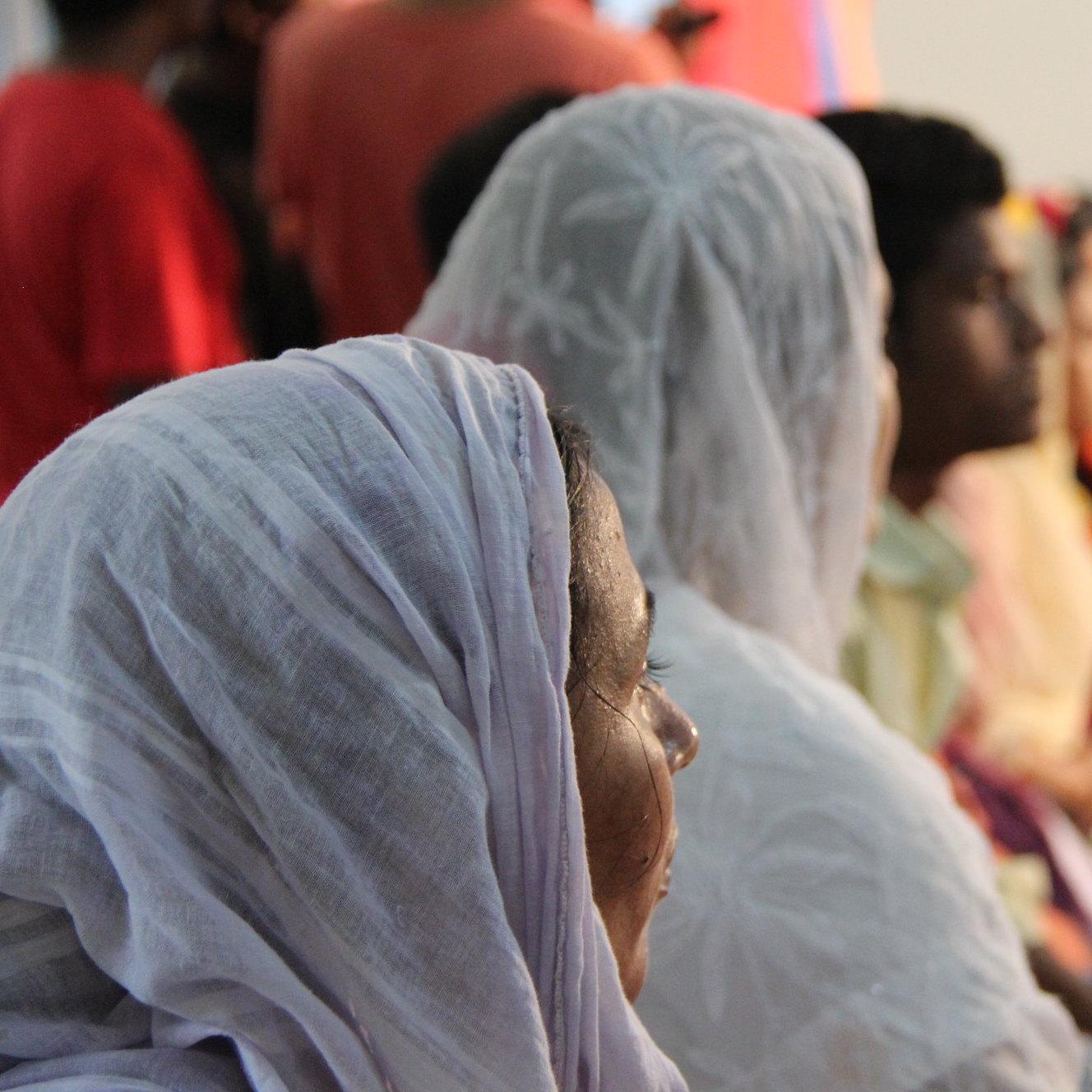
Image: Therapeutic theater counseling is one of the rehabilitation approaches being used for the survivors of the Rana Plaza disaster. The 2013 garment factory collapse illuminates why a commitment to CSR cannot be a substitute for human rights due diligence.
Business leaders often use the terms corporate social responsibility (CSR) and business and human rights (BHR) interchangeably. However, the aim and implication of these two concepts are fundamentally distinct. If companies are not aware of these differences, they may be falling short in meeting statutory and/or best practice reporting requirements—not to mention failing to deliver on their stated social impact missions.
The collapse of the Rana Plaza factory building in 2013, the discovery of pleas for help sewn inside clothing by garment workers, and reports of forced labor at construction works for the Qatar World Cup 2022 are only a few examples of inhumane working conditions in global supply chains. These incidents highlight that the implementation of CSR mechanisms is not a guarantor for ethical business conduct.
To address this gap and to end labor exploitation effectively, governments are increasingly requiring organizations to report on modern slavery risks and to put in place appropriate policies and processes accordingly.
CSR is not enough to combat modern slavery
CSR activities are mostly independent and completely voluntary. More often than not, they do not directly address the negative impacts that might arise from a company’s own business operations. CSR does not typically address human rights issues and is therefore notably flawed as a method for combating modern slavery in supply chains.
Companies can freely decide the extent to which they want to create value for the wider society. Volunteering and donating are important actions, but they do not absolve a company from its duty and responsibility to respect the rights of workers in its operations and supply chains. While a company’s commitment to CSR might contribute significantly to society, it is unlikely to address modern slavery risks arising from its direct and indirect business activities.
Consequently, CSR measures are not a replacement for the due diligence measures required to address the challenges present in today’s supply chains.
It is this awareness of CSR as being insufficient in tackling the potential negative impacts of business activities on human rights which resulted in a new wave of customers and investors insisting on tighter human rights measures. This has contributed to the emergence of the business and human rights movement, which aims to prevent worker exploitation and to hold companies accountable for their activities.
From voluntary measures to mandatory procedures
The adoption of the U.N. Guiding Principles for Business and Human Rights (UNGPs) in 2011 marks the cornerstone of the BHR movement. The UNGPs for the first time confirmed the responsibility of corporations to respect human rights within their business activities.
Building on this global framework, several national and regional laws and regulations have been passed, obliging organizations to implement human rights due diligence processes. These regulations require corporations to assess their operations and supply chains in order to mitigate the risk of human rights violations.
This development from voluntary measures toward legal reporting obligations marks the key difference between CSR and BHR. Whereas CSR is based on "doing good" and traditionally focuses on the positive contributions of a company, BHR is based on the idea of "do no harm." Companies are required to look underneath the surface of their own business activities and to respect the rights of those they impact, including workers, and to provide effective access to remedy.
Adopting a human rights-based approach to end modern slavery
Based upon this new approach toward responsible business conduct, the British, Californian and Australian governments have adopted laws specifically addressing the issue of modern slavery in business supply chains. In so doing, governments have responded to the reported increase in prevalence of modern slavery and the severity of the abuse.
The U.K. Modern Slavery Act (2015) for the first time set out the obligation for companies to annually disclose the measures that have been implemented to address modern slavery risks in their operations and supply chains. The Australian Modern Slavery Act (2018) goes even further by explicitly requiring corporations to report on the due diligence measures they put into practice.
In order to conform with these new laws, it is essential for companies to conduct regular modern slavery due diligence. However, thousands of companies subject to the reporting requirements of the U.K. Modern Slavery Act have failed to publish a report, and only 20 percent of the published reports fulfill the minimum requirements. In response, the U.K. government says it will start "naming and shaming" non-compliant companies this year.
The complex nature of modern slavery, the scale of today’s supply chains and increasing economic competitiveness means modern slavery will not be eliminated over night. Addressing slavery risks is a challenge for companies of all sizes and industries. But implementing a comprehensive modern slavery due diligence process is critical to meeting these challenges.
Respect for human rights is non-negotiable and needs to be guaranteed unconditionally. Thus, BHR goes beyond the desire to simply "do good" by turning the implementation of effective measures to mitigate modern slavery risks into a must-have.
Editor's Note: A version of this story was originally published on RightsDD's blog and is reprinted with permission. Based in London, RightsDD builds technology to help companies identify, assess, prioritize and report on modern slavery risks their supply chains.
Image credit: The International Labor Organization (ILO) in Asia and the Pacific
Technology Is Disrupting Agriculture Worldwide – a Plus for People and the Planet


Plant-based alternatives could become even more popular if entrepreneurs can score the access to capital that would allow them to scale up their ideas and bring them to market; if these products look good, taste good and are nutritious.
It’s natural for sustainability discussions at events such as this week’s annual Ceres Conference to focus on energy. After all, the links between fossil fuels and climate change are obvious. But as Janet Ranganathan of the World Resources Institute (WRI) pointed out, the global food and agriculture sector is also a huge emitter of greenhouse gas emissions.
The numbers are staggering. Agriculture worldwide contributes 3 percent to global GDP yet consumes about 70 percent of the earth’s freshwater supplies. And almost a quarter of the total emissions that scientists attribute to agriculture is due to food wasted or lost as it moves from farm and eventually to fork. Groups including WRI suggest we’ll need to grow 56 percent more food than we do today if we’re going to feed a planet that could be home to almost 10 billion people by 2050. And if your head isn’t spinning from these numbers by now, here’s another reminder: The world’s farmers will have to grow all of that food on the same amount of land, or even less.
Food technology could be an answer, but according to Ranganathan and other sources, total investment in this sector last year was only $17 billion. That may sound like a lot of money, but considering the global food and agriculture industry is worth more than $5 trillion, it's a relative drop in the bucket. If we hope to develop more alternatives to seafood and depleted oceans, grow food on less land and with less water and fertilizer, and convince people to ditch meat for other choices that are protein-rich and tasty, we’ll need more investments in this emerging industry sooner rather than later.
So there you have it: Farmers, scientists, and even those who sail the seas in search of fish and mollusks will have to reduce the growth of demand in conventional food choices, increase production without expanding land for farms and ranches, and protect and restore ecosystems so we can replenish our oceans’ fisheries. And by the way, consumers, especially those in emerging markets with rising incomes and changing tastes, are going to want to eat dishes like the one shown above, thanks to mass media and Instagram.
As Chevy Chase’s timeless impersonation of President Gerald Ford summed up, “It was my understanding . . . that there would be no math.”
But the math could add up, if more entrepreneurs can score access to capital to scale up their ideas and bring them to market—provided, of course, these products look good, taste good and are nutritious.
Adam Lowry, the co-founder and co-CEO of Ripple Foods, insists his company is one that can help nail this massive challenge. The company manufactures a yellow pea-based milk alternative that emits far fewer emissions than dairy milk and has more nutrients than nut-based beverages. “We can get a lot more people eating plant-based foods,” Lowry, also a co-founder of natural household brand Method, told an audience at Ceres. “But in order to do so, we need to make this food delicious and nutritious.”
It’s clear that the pallid, grainy, carb-heavy and mushy veggie burgers of yesterday don’t compare to what companies like Beyond Meat, Impossible Foods and Gardein now offer. That puzzle has been solved—just witness the response to Burger King’s Impossible Whopper pilot in the St. Louis region and the buzz over Beyond Meat’s IPO.
The climate change data is out there, and the science that has allowed meat- and dairy-free foods to become comparable or even better-tasting than conventional choices is definitely succeeding. Egg-free mayo is increasingly popular; plant-based milk alternatives have prime real estate on more supermarket shelves. New (or timeless) grains could replace the carbon-intensive foods we've eaten for centuries.
Now it’s time for the marketers and branding experts to step in. And it’s clear that in order for the food sector to do its part to help society avoid the risks linked to climate change, part of their messaging will have to be that the little choices we make every day can make a difference. The reality is that a dogmatic either-or philosophy over dairy versus yellow pea milk, or beef versus coconut oil and soy protein burgers, won’t win over consumers.
“The world of food is full of rules,” Lowry noted. “Every brand tells you what to eat and not to eat, and what was bad was good and what was good was bad. We don’t want to be the brand that chastises you for the burger on Friday night; we want to be the brand that rewards you for making better choices.”
Image credit: Leon Kaye
Los Angeles Rolls Out Its Version of the Green New Deal


This week, Los Angeles Mayor Eric Garcetti rolled out a set of broad-sweeping social and environmental goals which he dubbed LA's Green New Deal. The city is the latest in a string of state and local governments to adopt their own versions of the Green New Deal framework.
The concept of a nationwide Green New Deal remains mired in political debate, but it seems local and state governments aren't waiting for Washington to put similar plans in action. City and state lawmakers across the country are looking toward the Green New Deal—which seeks to address climate change while investing in jobs and economic equality—as a starting point for their own policies.
In January, New York Gov. Andrew Cuomo introduced his own version of the Green New Deal as part of his 2019 executive budget, which targets a statewide shift to 100 percent renewable energy by 2040. Three months later, New Mexico Gov. Michelle Lujan Grisham followed suit with similar legislation, which also funds retraining for displaced fossil fuel workers.
And this week, Los Angeles Mayor Eric Garcetti rolled out a set of broad-sweeping social and environmental goals which he dubbed LA's Green New Deal. The plan targets carbon neutrality for the city's energy consumption, transportation and buildings by 2050, along with zero waste and zero wasted water. It also puts forth lofty plans for investment in housing, food systems and zero-emission vehicles. In a city known for two-hour commutes and a cloak of smog, the plan is bold—to say the least.
In Garcetti's vision for a new LA, 80 percent of the city's vehicles will run on electricity or zero-emission fuel by the mid 2030s, and residents will drive 2,000 fewer miles annually than they do today. "It’s a far cry from today’s LA, where gridlock, tailpipe pollution and smoggy air have come to define a way of life," energy reporter Sammy Roth wrote in the Los Angeles Times.
Still, the city has already come a long way in recent years. Since Garcetti introduced the city's first Sustainable City Plan back in 2015, Los Angeles has become the top city in the U.S. for solar power use. The plan helped LA cut greenhouse gas emissions by 11 percent in 2016 alone—putting it on track for a 45 percent reduction by the mid 2020s.
Additionally, Los Angeles will phase out three of its natural gas power plants over the next 10 years and replace them with renewable energy, making it "the first big city in America to declare the beginning of the end of natural gas,” said Lauren Faber O’Connor, the city's chief sustainability officer.
As for that stressful commute, the mayor led a coalition to pass Measure M in 2016, which his administration calls the largest local infrastructure initiative in American history. Among other things, the plan calls for the construction and expansion of 15 public transit lines, which has the potential to create nearly 800,000 new jobs, according to the Garcetti administration.

Image: Los Angeles Mayor Eric Garcetti announces the city's Green New Deal.
This type of progress, in such a short time, is commendable for any city government, but Garcetti said more action is needed in order to address the magnitude of the environmental challenges we face. "The scale of our ambitions must meet the magnitude of [the climate] crisis," Garcetti wrote in a letter to Angelenos announcing the Green New Deal.
"The United Nations has warned us of the dangers of inaction or incrementalism. But we don’t need a report to confirm what’s right in front of us. The rising temperatures. The pollution we inhale, the flames on our hillsides, the floods on our streets. This crisis is real," Garcetti wrote. "This moment demands immediate solutions. This is the fight of our lives."
Like the federal Green New Deal concept championed by lawmakers like Rep. Alexandria Ocasio-Cortez of New York, LA's plan is about more than fighting climate change. It's meant as a roadmap for pursuing climate action in a way that enables economic equality—rather than solidifying old systems of poverty and disparity.
"Our Green New Deal is not just an environmental vision," Garcetti wrote. "It is designed to prioritize communities that bear the brunt of climate change first." For example, the mayor established a Jobs Cabinet to help train workers in fields like energy efficiency and clean power, “so that Angelenos will be prepared to fill 400,000 good, green jobs that can’t be shipped overseas,” Garcetti continued. The plan also includes provisions for affordable housing and targets an end to street homelessness by 2028.
Further, the Green New Deal plan establishes a Climate Emergency Commission, which will “draw the best ideas from neighborhoods on the front lines of climate change, harness the expertise of scientists, and recommend long-term actions to reduce rising temperatures,” Garcetti said.
But not everyone is convinced. Sunrise Movement Los Angeles, an organization that is part of the national push for a Green New Deal, responded in a Medium post—writing bluntly that Garcetti's plan “is not a Green New Deal,” the Los Angeles Times reported Monday. The group argues that sufficiently moving the needle on climate change requires carbon neutrality by 2030, two full decades earlier than Garcetti's proposed timeline.
If that's the benchmark to hit, other city governments may soon face similar criticisms: New York City's version of the Green New Deal, which its city council passed in April, calls for a 40 percent cut in emissions by 2030—putting full-fledged neutrality a long way off.
Still, it's telling that lawmakers are so willing to slap the Green New Deal moniker on their climate action proposals. As support for this type of policy grows—and state- and city-level movements continue to pick up steam—the landscape may very well give way to a race to the top that's defined by the biggest, most ambitious and most short-term climate policies.
Image credits: Dillon Shook and Pedro Marroquin via Unsplash and Mayor Eric Garcetti via Flickr
What Science-Based Targets Mean for the Sports and Entertainment Sector


The sports and entertainment industry has emerged as a powerful voice on sustainability—including the adoption of science-based emissions targets that help to mitigate climate change.
Image: This solar installation atop the Staples Center at LA Live is just one example of how upgrades to sports and entertainment venues can support science-based targets.
Professional sports venues were early adopters of sustainability. Solar panels, miniature wind turbines, more responsible food choices, rainwater collection systems, and recycling stations began to pop up at arenas and stadiums across the U.S. several years ago. From baseball and football to basketball, hockey, golf and auto racing, stakeholders began to realize they were in a perfect position to spread messages about key environmental issues—and fans responded enthusiastically.
Today, the sports and entertainment industry has become an even more powerful voice on climate change and sustainability. This shift aligns well with the rest of the global business community, which has coalesced around a single, widely-accepted source for guidance on global climate issues, the Intergovernmental Panel on Climate Change (IPCC). Perhaps even more importantly, the United Nations Sustainable Development Goals (SDGs) provide businesses with a universal language for focusing public conversations on the world’s most important challenges.
Science as a corporate responsibility metric
Guidelines like those the SDGs and IPCC provide are all the more important as urgency of climate action ratchets up. In 2018, the IPCC warned that global temperatures are on pace to exceed 1.5 degrees Celsius above pre-Industrial levels in less than 12 years—increasing the intensity of storms, droughts, floods and heat waves around the world. Warming even half a degree more could substantially worsen these impacts, the IPCC concluded.
In response, the Science-Based Targets initiative (SBTi)—which certifies corporate climate targets against IPCC findings—updated its standards to support a 1.5-degree trajectory.
Many companies have already focused their carbon-reduction plans on the SBTi’s former criteria aligned with a 2-degree scenario and may have to scramble to meet the new goal. But several are already ahead of the game and have certified their targets through SBTi’s new standard.
The global sports and entertainment company AEG is one of those in the vanguard—and it’s raising the bar for the industry.
“We consider it basic corporate responsibility,” John Marler, vice president of energy and environment at AEG, told TriplePundit. “If this is what the science community is calling for, we have to hit that level and we have to do our part.”
Growth plus decarbonization: It’s tricky . . .
SBTi sells itself on bottom-line impacts. According to its surveys, a science-based platform for climate action helps companies drive innovation, improve their resiliency when faced with regulatory uncertainties, boost investor confidence, and gain an advantage over the competition.
Science-based emissions targets also give companies the ability to spot long-term challenges—and opportunities—for business growth and decarbonization. Those two goals may seem contradictory, but it is possible to do both at once.
Sports and entertainment companies like AEG have a leg up, because data collection is already built into their DNA. “That’s exactly the approach you see in professional sports: meeting and beating the statistics,” Marler explained. “The foundation of our program is data collection. We have 86 data points for each operation worldwide (10 to 20 average for each). We have 10 years of data, so we can set goals and identify outliers.”
That focus on hard data also enables AEG to track best practices at individual venues, apply them across the company, and share them on an industry-wide basis.
One recent example is the new climate control system at AEG’s Staples Center in Los Angeles, which tackles carbon emissions through the energy-water nexus. In addition to saving energy, the system produces pure water that replenishes the surface of the ice hockey rink home to the LA Kings.
Marler advised his peers in business to look at climate action and sustainability as a form of accounting: “It’s not a stretch. Companies just have to load sustainability into their data collection. After all, data is the language of business… We’ve learned to work together with our financial accountants. It’s a matter of training and connecting.”
But AEG recognizes that staying on the carbon-reduction track is a challenge for a growing company. “What we’ve reported since 2016 is that we were having a hard time meeting that trajectory,” Marler said. “We are a growth company, so while we’re seeing efficiency gains at an individual facility level, we are also adding facilities.”
Image: Created and presented by AEG, the Amgen Tour of California highlights the distinct natural beauty of the Golden State through sport.
. . . but not impossible.
An analysis of AEG’s value chain revealed a pathway to work toward growth while reducing emissions, Marler said.
About 75 percent of AEG’s emissions are Scope 2, which typically refers to grid-supplied electricity. In addition to energy-efficiency upgrades, the company deploys renewable energy certificates (RECs) to offset its Scope 2 emissions and keep on track with its targets.
But Marler said the company is well aware that RECs do not tackle the heart of its problem, which is the continued reliance on fossil fuels for grid-supplied electricity. He compares the situation with the experience of cities that want more clean power and can’t get it from the grid. “For example, in Australia, their systemwide emissions are going up,” he observed. “When the grid is getting dirtier, you’re going in the wrong direction.”
That means global companies like AEG need to take on a public policy role and advocate for clean power, Marler said. In addition to engaging with policymakers, companies can also work to enlist public support for more clean power.
That’s where the SDGs come in. Though the 17 goals were intended as guideposts for national policy, businesses are also finding that they can apply selected SDGs to their operations. That provides them with a common, global language for carrying on conversations about key environmental issues, such as climate change, with the public, policymakers and other stakeholders.
Let’s talk about climate change
For sports and entertainment companies, public outreach on climate action and sustainability can pack a powerful punch. AEG alone counts millions of visitors to the more than 22,000 events it hosts annually.
Sustainability information and signage are becoming common features at venues worldwide. But that’s only the tip of the communications iceberg. “The way to communicate these days is through social media. You can reach so many more people,” Marler said. “We’ve decided to do more of that lately, and we’re pleased with the results.”
The company’s #GOGREEN Challenge, for example, includes a personal carbon calculator and encourages people to share their success stories on social media.
The bottom line
Science-based emissions targets and global goals create a framework for business action. And other science-based methodologies, such as context-based water targets and data-centric goals around recycling, can help companies further streamline their supply chains.
Companies that jump on board early will likely have a leg up on competing for hearts and minds as the next generation of consumers come of age. That’s something to keep in mind, especially considering that the up-and-coming generation of climate activists is keenly aware of the importance of honest accounting on climate emissions.
This article series is sponsored by AEG and produced by the TriplePundit editorial team.
Images courtesy of AEG
Why Lobbying Disclosures Are the Next Frontier in Transparency


When it comes to lobbying activities and their disclosures, investors at the annual Ceres Conference have made it clear that investors are watching and want action, not just words.
The day before this week's annual Ceres Conference kicked off in San Francisco, I had an opportunity to take a long walk, which ended at the Golden Gate Bridge Plaza. The scenery is beautiful, but gazing at a massive cargo ship (shown above) was a reminder of not only how many goods are transported to and from this region home to over 7 million people, but also the emissions that result from all of those ships, tankers and barges. Add the emissions associated with the area’s traffic and power generation—and tally up similar scenarios around the world—and the math makes it clear that energy companies have to be part of the climate action conversation.
It appears they increasingly want to be. Last month, for example, Royal Dutch Shell generated plenty of headlines when the oil giant announced it will cease membership in the American Fuel & Petrochemical Manufacturers (AFPM) by 2020 due to the lobbying group’s stance on climate change.
As noted by leaders at the annual Ceres Conference, Shell is still a member of various trade and lobbying groups including the U.S. Chamber of Commerce, the American Petroleum Institute and the National Association of Manufacturers, all of which have taken stands on climate change that are often at odds with their corporate members.
Nevertheless, Shell says it has put the trade associations to which it belongs on notice.
“Shell must remain at the forefront of the drive for greater corporate transparency. We will continue to be more open about what we do and why we do it,” Shell Chief Executive Officer Ben van Beurden said in a public statement. “We want to help people better understand Shell’s performance, values and principles. These reports outline our approach and activities in the crucial areas of sustainability and our relationships with industry associations and governments.”
Some stakeholders may question whether Shell's move is meaningful or not. On one side is the argument is that even if the company ditched one trade association, it is still paying dues for others that spend money to lobby against effective climate change policies. The flip side to that argument is that by continuing membership with a trade association, you still have a voice — one that you forfeit if you’re no longer part of that same group.
“Shell’s action is meaningful because it opens up new frame of debate. It matters what associations do, as it’s your company’s money,” said Timothy Smith, director of ESG shareowner engagement at Walden Asset Management, a sustainable, responsible and impact (SRI) investment firm based in Boston. Smith explained to an audience at the Ceres Conference that by retaining membership within a trade organization, even if a company disagrees with the group’s policy, it retains a seat at the table and can work to change that organization’s stance on important global challenges.
A case in point is the U.S. Chamber of Commerce’s evolution on climate change. Long known as a lobbying behemoth opposed to any meaningful climate action legislation, the leading U.S. business lobbying group has evolved to a more nuanced stance on the private sector's role in fighting climate change. “Inaction is not an option,” is one of the U.S. Chamber’s new tag lines.
Tough stance, evolved stance, nuanced stance or no stance, the sense at Ceres is that companies must harness their influence in order to push lobbying associations to take a more proactive approach on challenges such as climate change. As Smith explained, the argument of “’I’m just a member; I’m not actively involved in that group’—that doesn’t matter anymore.”
The same goes for the explanation that companies have many other reasons to join lobbying groups such as the U.S. Chamber that may have nothing to do with climate change. Responses such as “we disagree with them on energy, but they offer valuable services” also no longer pass muster, Smith said. At a minimum, companies have reached the point at which they need to disclose their lobbying spend and activities to stakeholders. “We’re urging them to take responsibility for what that association does,” he added.
One tactic that could convince companies to remove opaqueness around lobbying costs would be to factor lobbying spends into various sustainability rankings. Earlier this spring, Austin Reagan and Victoria Mills of the Environmental Defense fund noted that only one of the major corporate sustainability indexes recognizes businesses for lobbying on behalf of climate-friendly policies.
In the meantime, Smith made it clear that investors are watching and want action, not just words. “Trade associations need to know we’re patient, but we won’t be patient forever,” he said as he wrapped up his thoughts at the Ceres Conference.
Image credit: Leon Kaye